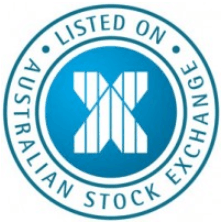Chris Weston, Chief Market Strategist at IG Markets
The moves in developed fixed income markets continue to be a huge talking point on trading floors and while the hunt for yield has been a driver, the overnight action seems to be driven predominately by risk aversion.
US housing data was really poor and certainly was a factor in the US ten-year trading down eight basis points to 2.44% – clearly eyeing the June 2013 low of 2.40%. German ten-year bunds are now only two basis points from an all-time low and it takes a brave soul to be shorting these instruments despite being technically overbought. What’s more, lost behind the geo-political headlines St Louis Fed president James Bullard detailed that policy normalisation (from the Federal Reserve) may need to begin sooner rather-than-later. On another day we could have seen a reasonable sell-off in the bond market and better USD strength.
The sell-off in the S&P 500 was fairly progressive and there wasn’t any real knee jerk reaction to the tragic news about Malaysian Airlines flight MH17. Futures markets saw a further sell-off in the after-market. Although, we’ve seen a bit of buying coming back through Asia, the index will likely open through the April uptrend, with price already breaking the 21-day moving average yesterday. Price action in today’s session could be very telling, especially with traders still harbouring many questions around the short-term implications in Ukraine. Unless we hear more definitive news, the uncertainty could see elevated risk aversion.
The ASX 200 a pillar of strength
Perhaps European and US traders will cast an eye over price action in Asia. The Nikkei has sold off over 1%, with USD/JPY following the move lower in US yields, but the ASX 200 has been a pillar of strength. Funds have been directed towards the banks and this has seen the broader benchmark push into positive territory. Clearly their status as a quasi-bond is working wonders on a day like today, where the three-year Australian government bond has fallen five basis points at 2.46%, now it’s below the cash rate. Further down the curve the ten-year bond is at the lowest levels since June 2013 and when you are getting a 5% net yield in the banks, income remains the trump card.
The credit markets are now pricing in a 60% chance of a rate cut from the RBA by December and an 88% chance by April. So the idea that policy tightening is some way off will keep housing supported for now and thus banks should remain bought on dips. Keeping an eye on the credit markets, I continue to see short-term upside potential for AUD/NZD, with a move to the 200-day moving average at 1.0888 a potential target. This could be driven by next week’s Australian Q2 CPI print (consensus for the trimmed mean figure is +2.7% yoy) and the RBNZ meeting. The central bank could hike the cash rate, but give a clear indication that they will be on hold until December.
US futures fell heavily after the cash session, with IBM falling in the post market. Naturally the Dow reacted more aggressively than the S&P 500; given IBM has a 7% weight on the index (due to its high price). Midway through Asian trade though we’ve seen an element of short-covering despite poor China house price data, with our European open calls following suit.
Will Europe increase sanctions on Russia?
European markets still look set for a weaker open, although it seems the real volatility will be seen in Russian markets, following on from yesterday’s sell-off. The RUB (ruble) is likely to continue where it left off, pulling away from the March downtrend, though it closed above yesterday. Russian credit-default swaps also moved up 16% and will likely continue to show signs of concern, as calls will no doubt grow for Europe to reduce Russia access to capital. Holding long positions in Russian equity or corporate debt is the pain trade right now and while some will try their hand at picking what they perceive to be lows there must be easier ways to make money.

Short CHF/JPY remains my preferred way to hedge portfolios against increased volatility. Technically the pair broke through strong horizontal support at 113, which has been a floor in the pair since mid-May, so shorts are preferred from current levels.
